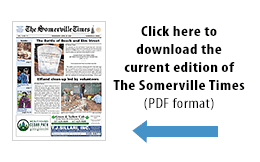 By Joseph A. Curtatone
By Joseph A. Curtatone
(The opinions and views expressed in the commentaries of The Somerville Times belong solely to the authors of those commentaries and do not reflect the views or opinions of The Somerville Times, its staff or publishers)
Somerville is thriving. A commitment to our values, made explicit in our prudent, strategic investment in our community, has resulted in success stories across the city. Our students are testing better than they have in years. The city has seen 73 net new businesses open in the last three years, many of them locally owned and operated. We’ve made our city more walkable and bikeable, built and renovated even more green and open spaces, and increased our overall quality of life with more services than most cities and towns, even while we’ve slashed discretionary spending in our budget by finding smarter, more efficient ways of doing business. Our success story has Somerville in demand, adding to the pressure from a housing market that has extraordinary regional demand and too little supply. While we have been acting and are acting to address the housing crunch with a long-term strategy guided by the community through SomerVision, aiming to build more housing and provide real tax relief by expanding our tax base through strategic development, we must also act today to protect the residents already here that have helped us make Somerville in demand.
That is why this past week, I submitted a proposal to increase our residential property tax exemption to 35 percent—the highest residential tax break in the state—to the Board of Aldermen. After seven years with few changes on property tax bills for most, due in part to the Great Recession, the recently completed triennial revaluation of property values, required by the state, led to some homeowner seeing larger increases on their property tax bills. When we announced this year’s tax rates, we said most cities would see modest increases and that held true—more than two-thirds of properties in the city saw modest tax bill increases between 1 and 9 percent, and some properties saw decreases. However, roughly one-quarter of property owners saw increases between 10 and 24 percent.
Our community invests in supporting our vulnerable populations and increasing the residential exemption is no different. We already have a regressive tax system in Massachusetts, with a flat income tax and a sales tax that has been increased. The property tax, increasingly relied upon by cities and towns to fund services because of severe cuts in state aid since 2000, is perhaps the most regressive tax. It does not take into account income or ability to pay the tax, and hits hardest on the middle class, retirees and small businesses. But it is those people that make Somerville our home.
A home is not defined by the things within it, but about the people who live and open up shop there. It’s about the neighbor who breaks down the optimal Red Sox lineup for you while you’re putting your trashcans out. Home is the neighbor who tells you—and it’s your first hearing of it, despite exhaustive outreach efforts by the city—that a snow emergency goes into effect at 6 p.m., so you better get your car moved, and by the way, there’s a lot a block and a half up the road where you won’t get towed. It’s the hair stylist down the road who before sitting you down in the chair, pulls out her cell phone, and starts showing off the photos of her latest addition to her family, asking to see your most recent family photos as well. It’s your son’s teacher at the neighborhood school, who also taught his older sister.
These kinds of people are everywhere. What makes Somerville uniquely our home is the diversity of its people. Living in Somerville is an education, regardless of your age. Whether you’re a student in Somerville Public Schools, where more than 50 languages from around the world are spoken, or an adult trying the new mom-and-pop restaurant that opened down the street, every day here holds the promise of a new and exciting experience. Every Somerville neighborhood, from Ten Hills to Davis Square, from West Somerville to East Somerville, has an eclectic mix of neighbors spanning generations, nationalities and cultures.
As Somerville’s stock rises and becomes a more desirable place to live, we have to protect the people, diversity and culture that helped make our city so desirable in the first place. That’s why the city joined with the Metropolitan Area Planning Council (MAPC) and Somerville Community Corporation and (SCC) in producing a report about potential displacement along the Green Line Extension Corridor, and then held three public forums to develop a strong and effective housing agenda for the city. It’s why our inclusionary zoning program sets a rate above the state’s benchmark; why we increased our affordable housing linkage fee and passed the Community Preservation Act; and why we’re pursuing the creation of both a new affordable housing program specifically for working middle class families, and new fabrication and arts districts that preserve artist and maker spaces.
An increased residential exemption is another tool, along with everything we are already doing, that we can use to protect our people, diversity and culture. And I’m reconvening the Financial Advisory Committee to explore more options for relief, including for small business and owners and increasing our exemptions—already double the state limits—for seniors, veterans, widows and those with disabilities. Somerville is thriving and in demand. People want to move here, stay here and raise a family. While we pursue a long-term strategy, we should also act immediately to protect those who already call Somerville home.















Reader Comments